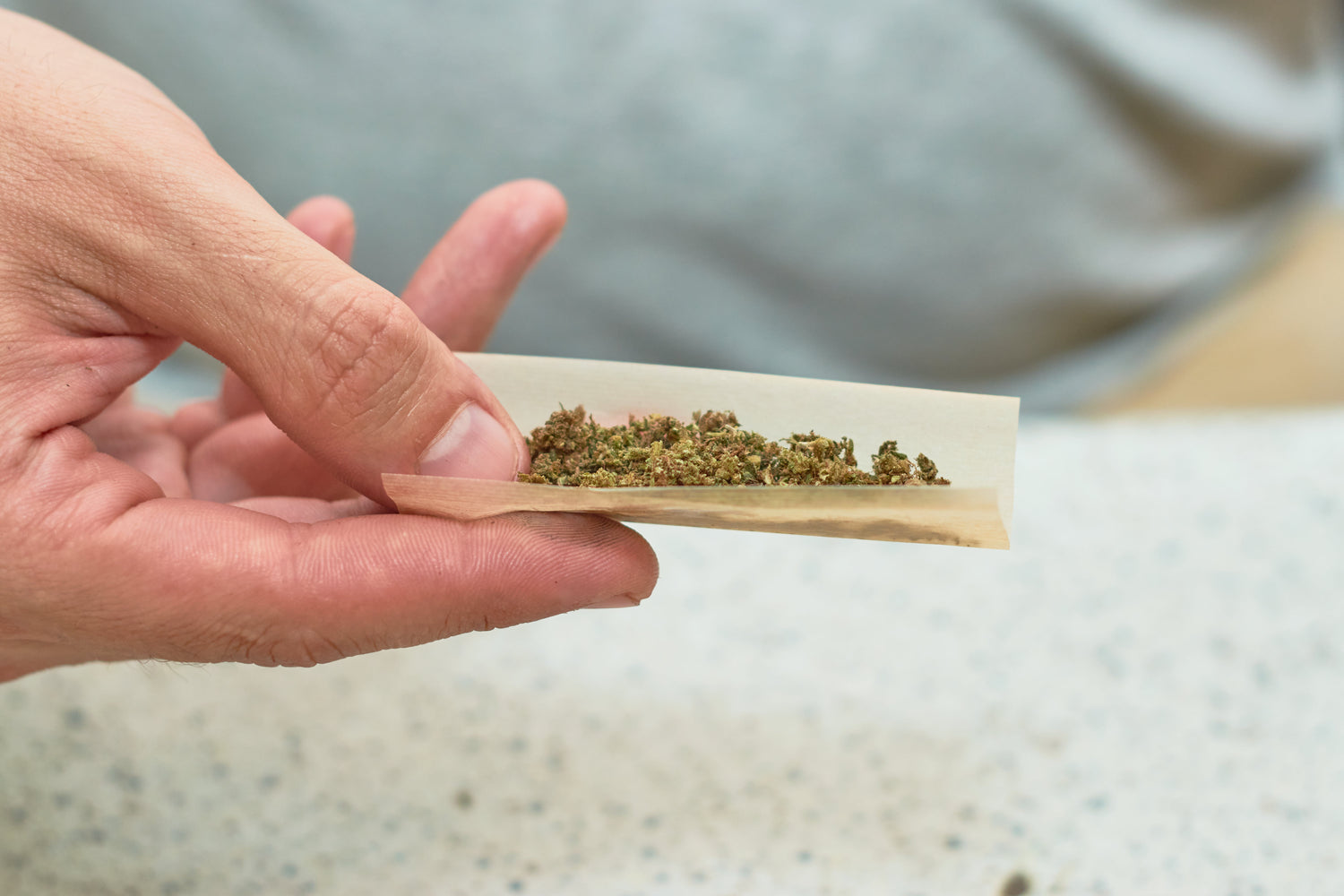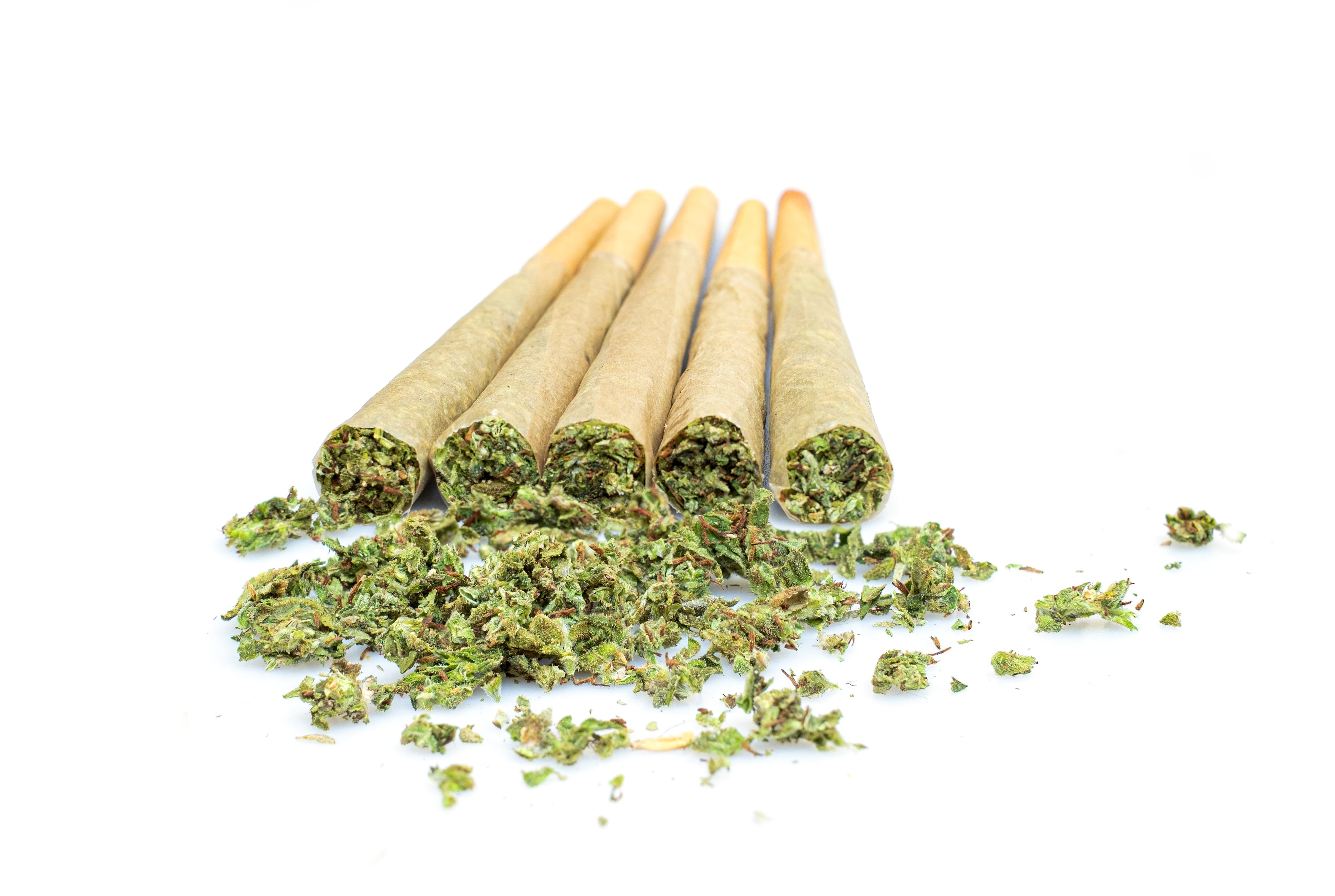Premium rolling papers deliver significantly better experiences than basic rolling papers through superior materials, enhanced performance characteristics, and improved flavor neutrality. Material composition, design elements, and processing methods all determine quality and performance.
This comprehensive rolling paper guide explains materials, performance factors, and design elements so you can choose the best rolling papers for optimal sessions.
Rolling Paper Materials and Your Available Options
Material composition determines the fundamental characteristics of rolling papers. Understanding the origins and properties of each material helps you select papers that match your preferences and budget.
Hemp Rolling Papers as the Premium Natural Choice
Hemp papers use sustainable hemp fibers, creating naturally brown papers with strong construction. Industrial hemp stalks are processed into thin yet durable papers that typically weigh 13-15 GSM compared to 18-20 GSM for wood pulp papers.
Hemp papers cost more due to the expense of raw materials and specialized manufacturing, approximately $0.08 per paper, compared to $0.02 for wood pulp. The brown color and textured surface (feels like fine sandpaper) differ from smooth white papers and affect grip during rolling.
Hemp papers have an exceptional storage life, lasting 2-3 years in their original packaging, compared to 6 months for rice papers. Leading hemp paper brands include Raw, Smoking, and Elements, with Raw Classic and Smoking Brown being the most consistent performers.
Hemp papers suit users who prioritize sustainability and natural materials over cost savings. Quality-conscious consumers choose them for environmental responsibility and superior longevity. To understand the full benefits of hemp-based rolling papers, consider how their natural fiber construction provides both performance advantages and environmental benefits that justify the premium pricing.
Rice Rolling Papers for Ultra-Thin Performance
Rice papers are made from processed rice straw or husks to create a nearly transparent material, the thinnest papers available. They feature unique performance characteristics that differentiate them from other paper types.
Rice papers cost more than wood pulp (approximately $0.12 per paper) and need careful storage to prevent moisture damage. They become brittle and tear easily at humidity levels below 40%. Store with humidity packs maintained at 55-60% for best results. Most rice papers also run 2-3mm narrower than their labeled size.
Rice papers have the shortest storage life, typically around 6 months, even under optimal storage conditions. Their transparency appeals to users who value aesthetics and want to see the material through the paper.
Rice papers work for experienced rollers who are comfortable handling delicate materials. They minimize paper presence during sessions but require patience and a developed technique.
Wood Pulp Papers as the Traditional Standard
Wood pulp rolling papers represent the traditional foundation of the industry, manufactured from processed wood fibers in both bleached (white) and unbleached (brown) varieties. These papers provide the most affordable option while maintaining reliable availability across all markets.
The thicker construction, compared to hemp or rice alternatives, makes wood pulp papers more forgiving during rolling, which explains their popularity among beginning users. Bleached varieties undergo additional processing to achieve their clean white appearance, while unbleached versions maintain their natural brown color.
Wood pulp papers serve everyday users who prioritize affordability and availability over premium characteristics. They work well for high-volume users and those learning rolling techniques without concern for material costs.
Specialty Materials Including Flax and Cellulose Options
Flax papers perform like rice papers with enhanced durability, made from flax plant fibers that create smooth, thin papers.
Transparent cellulose papers utilize plant-based films for complete transparency, allowing you to see through the material. They require different rolling techniques.
Specialty papers cost more and have limited availability. They suit users who experiment with materials and are willing to pay premium prices.
Performance Factors That Define Quality
Quality rolling papers exhibit three essential characteristics: consistent performance without irregularities, a neutral taste that doesn't interfere with herb flavors, and a strong construction that resists tearing.
Performance Rate and Consistency
Performance speed and evenness distinguish high-quality papers from those of lower quality. Good papers maintain consistent performance, preventing uneven results.
Performance characteristics depend on paper thickness, material density, and manufacturing consistency. Hemp and rice papers offer extended performance duration compared to wood pulp due to denser fiber construction. Specific duration times for king-size papers: hemp 8-10 minutes, rice 12-14 minutes (longest duration), wood pulp 6-7 minutes (shortest duration).
Environmental factors affect performance rate significantly. Altitude above 5,000 feet increases duration by 15-20% due to environmental conditions. Humidity below 35% affects performance speed, while levels above 65% can cause inconsistent results.
Consistent performance requires uniform construction and proper processing. Quality papers maintain consistent thickness, preventing uneven usage patterns. Good papers maintain structural integrity throughout the session.
Taste Impact and Flavor Neutrality
Quality papers should be tasteless, preserving the herb's natural flavor without adding paper taste or chemical aftertastes.
Material type affects flavor neutrality. Hemp and rice papers taste cleaner than wood pulp options. Natural processing methods avoid harsh chemicals that create off-flavors. Chlorine residue from bleached papers remains detectable for up to 6 months after manufacturing, creating a harsh chemical taste.
Calcium carbonate, added to some papers to modify performance characteristics, creates a metallic taste during use. This occurs particularly with certain paper types or usage methods.
Processing methods affect taste significantly. Papers with natural gums (like gum arabic) provide clean adhesion without chemical flavors. Natural gum arabic creates better adhesion than synthetic alternatives without affecting taste.
Design Elements Including Size, Thickness, and Processing
Paper design affects usability and performance through various options, including size, thickness, and processing methods. Understanding how rolling paper design impacts airflow is essential for optimizing your experience.
Rolling Paper Sizes and Selection
Rolling papers come in several standard sizes designed for different usage scenarios.
Single-wide papers measure 70mm in length, providing the traditional standard size ideal for individual sessions and controlled portions. These compact papers suit both beginning rollers learning techniques and experienced users who prefer smaller, manageable sizes.
King-size papers offer extended length at roughly 110mm long, accommodating more material for longer sessions or group sharing. King Slim options maintain the length while reducing width, creating a more elegant profile that some users prefer for aesthetic reasons.
Pre-rolled cones eliminate the rolling process while maintaining size variety. Available in multiple dimensions from small personal sizes to large party formats, cones offer convenience without requiring manual rolling skills. They're particularly valuable for users with mobility issues or those who struggle with traditional rolling techniques.
Thickness and Processing Considerations
Paper thickness, measured in grams per square meter (gsm), affects performance and rolling difficulty. Thinner papers (12-14 gsm) offer extended performance with less paper taste but require careful handling, as they tear at approximately 2.3 lbs of pressure. Thicker papers (18-20 gsm) roll more easily and withstand up to 4.1 lbs of pressure, but have shorter performance duration with more paper taste.
Environmental conditions critically affect paper handling. The humidity sweet spot is 45-55%. Below this range, papers become brittle, above it they become limp and hard to handle. Temperature matters too: store papers below 77°F to prevent adhesive degradation, which can make sealing difficult.
Processing methods impact performance and health. Bleached papers use chemical treatment for a white appearance, introducing trace chemicals that affect taste and health considerations. Chlorine bleaching leaves residual chemicals that may affect the experience.
Unbleached papers avoid chemical processing, appealing to health-conscious users. Chlorine-free processing utilizes oxygen bleaching to provide safer alternatives while achieving lighter colors.
Health and Safety Considerations
Many consumers now prioritize papers manufactured without harmful chemicals or additives. Knowing what to avoid helps you make healthier choices.
Harmful Additives to Avoid
Lower-quality rolling papers contain harmful additives, including calcium carbonate, potassium nitrate, and heavy metals that create harsh experiences and potential health risks. Calcium carbonate (chalk) is sometimes added to improve performance characteristics, but these minerals create harsh experiences and leave unpleasant residue.
Potassium nitrate, used to ensure even performance, can irritate the respiratory system and cause harsh throat sensations. Titanium dioxide, commonly found in white papers as a whitening agent, offers no functional benefits and may pose inhalation risks.
Heavy metals and synthetic dyes used in colored or printed papers can pose health risks. These decorative elements serve no functional purpose and introduce unnecessary chemical exposure.
Reading ingredient lists and choosing papers with minimal additives helps avoid these potential hazards. Reputable manufacturers clearly list their ingredients and processing methods, making it easier to identify safer options.
Natural and Safe Alternatives
Quality rolling papers use natural ingredients that perform cleanly without introducing harmful compounds. Gum arabic, derived from acacia tree sap, provides natural adhesive properties without synthetic chemicals or harsh tastes that characterize artificial alternatives.
Natural plant-based materials like hemp, rice, and unbleached wood pulp perform cleanly without requiring chemical additives to achieve good performance characteristics. These materials offer inherently safe experiences when properly processed.
Look for certifications and quality standards that indicate responsible manufacturing practices. Organic certifications, when available, provide additional assurance that the papers are produced without harmful pesticides or chemicals during cultivation and processing.
Brand Recommendations and Selection Guide
Leading brands offer a range of quality levels and price points. Here are the top options across different categories.
Top Premium Brands
Premium rolling paper brands position themselves in the luxury market segment, typically offering extensive product lines with multiple material options and innovative features. These manufacturers invest heavily in research and development, creating proprietary materials and advanced processing methods that justify higher price points.
Leading premium brands focus on limited distribution through specialty retailers, maintaining exclusivity that appeals to discerning users willing to pay for perceived quality differences. They often emphasize artisanal manufacturing methods, European origins, and celebrity endorsements to build brand prestige.
Futurola exemplifies premium positioning through French manufacturing, chemical-free processing, and proprietary material blends that target quality-conscious consumers. Their marketing emphasizes European craftsmanship and technological innovation to justify premium pricing.
Best Value Options
Value-focused brands prioritize wide distribution, consistent availability, and competitive pricing over premium positioning. These manufacturers achieve cost advantages through efficient production methods, simplified product lines, and mass market distribution strategies.
Many established value brands offer reliable quality at accessible price points, making them excellent choices for high-volume users and price-conscious consumers. They focus on meeting basic performance requirements without the premium materials or innovative features of luxury options.
Value brands typically maintain broad retail availability through convenience stores, gas stations, and online platforms, ensuring consistent access for regular users. They often offer bulk packaging options that further reduce per-unit costs for frequent users.
Essential Accessories and Common Issues
The right accessories enhance the performance of rolling paper, while knowing how to solve problems ensures consistent results.
Filters and Storage Solutions
Filters, also known as tips or crutches, provide structural support and improve airflow in rolled products. Pre-made filters offer convenience and consistency, while DIY filters, such as those made from business cards or specialized filter papers, allow for customization of size and density.
Filter size should match your paper size and personal preferences for draw resistance. Larger filters provide more structural support but may reduce airflow, while smaller filters offer less support but maintain easier draw.
Proper storage maintains paper quality and protects it from damage caused by environmental factors. Store papers in cool, dry places away from direct sunlight and extreme temperatures.
Original packaging often provides adequate protection, but dedicated storage containers offer superior protection for long-term storage and prevent crushing or moisture damage.
Troubleshooting Common Problems
Inconsistent performance typically results from uneven material distribution or inconsistent rolling tension. Ensure material is distributed evenly throughout the length and avoid over-packing, which restricts airflow and creates irregularities. Practice consistent rolling pressure to maintain uniform density.
Harsh-tasting problems often indicate contaminated paper or improper storage conditions. Check for moisture damage, chemical odors, or visible contamination before use. Switch storage locations if papers consistently develop off-flavors.
Rolling difficulties can be addressed through technique adjustments and the proper selection of paper. Use slightly dampened fingertips for a better grip on smooth papers. Work in moderate humidity conditions to prevent brittleness. Choose thicker papers while developing your technique.
Frequent tearing suggests either poor paper quality or excessive force during the rolling process. Apply gentle, consistent pressure rather than forceful manipulation, and ensure your hands are clean and dry to prevent degradation of paper fibers.
Making the Right Choice for Your Needs
Match papers to your specific requirements: developing users should choose thicker, forgiving papers, while advanced users can handle delicate options. Daily users might prioritize value, while occasional users can invest in premium papers.
Budget affects options, but consider cost per session rather than just purchase price. Premium papers often provide better overall value through superior performance.
For reliable, high-quality options that strike a balance between performance and value, Futurola's product line offers excellent choices. Their pre-rolled cones offer convenience without compromising quality, while their rolling papers provide European craftsmanship and premium materials at competitive prices.
Elevating Your Rolling Experience Through Smart Choices
Choosing rolling papers based on material type, performance characteristics, and design features ensures optimal experiences tailored to individual preferences and usage patterns. From sustainable hemp to ultra-thin rice papers, each material offers distinct advantages for different users.
Quality rolling papers represent a small investment that significantly impacts your experience. The key lies in experimenting with different options while understanding the trade-offs involved.
Start with reputable brands that match your experience level and explore premium options as your preferences develop. At Futurola, we're committed to providing rolling papers that consistently deliver the experience you're seeking, whether convenience, flavor purity, or performance.





LEAVE A COMMENT
All comments are moderated before being published.
This site is protected by hCaptcha and the hCaptcha Privacy Policy and Terms of Service apply.